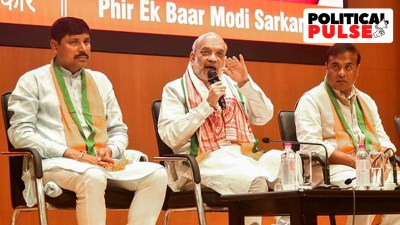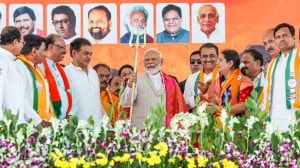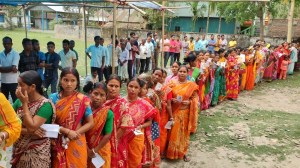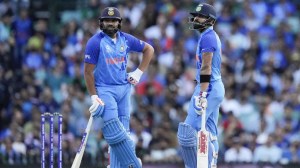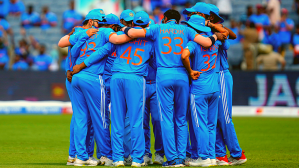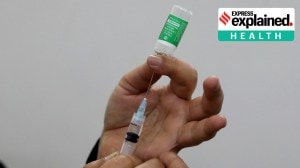- India
- International
EVM makers don’t know which party gets which button: poll panel to Supreme Court
The Election Commission also rejects as ‘false’ a news report about a mismatch between votes recorded on electronic voting machines and VVPAT units during a mock poll in Kerala.
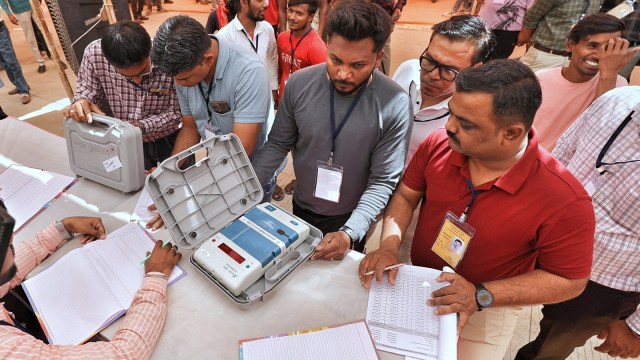 Election duty staff starts distribution of EVM and VVPAT machines from the Election Commission's warehouse in Ahmedabad on April 8 ahead of Lok Sabha polls. (Express photo by Nirmal Harindran)
Election duty staff starts distribution of EVM and VVPAT machines from the Election Commission's warehouse in Ahmedabad on April 8 ahead of Lok Sabha polls. (Express photo by Nirmal Harindran)
The Election Commission of India informed the Supreme Court on Thursday that the manufacturer of the electronic voting machines does not know which button is going to be allotted to which political party or which machine is going to be allotted to which state or constituency.
Answering queries on the working of the machines and their VVPAT (voter-verified paper audit trail) units, a senior official of the commission also informed a bench of Justices Sanjiv Khanna and Dipankar Datta that the voting unit comprises a ballot unit, control unit and a VVPAT unit, which is basically a printer.
Seven days before polls, images of symbols are uploaded on the 4 MB flash memory of the VVPAT machine in the presence of candidates or their representatives.
The official pointed out that the ballot unit is agnostic to the candidates or symbols. It only has buttons against which party symbols are pasted. When a button is pressed, the unit sends a message to the control unit, which alerts the VVPAT unit, which in turn prints the symbol matching the button that is pressed.
The court is hearing petitions seeking 100 per cent verification of EVM votes with their VVPAT slips. Currently five EVMs are randomly verified against VVPAT slips in every Assembly segment.

Meanwhile, Advocate Prashant Bhushan, appearing for the petitioner Association for Democratic Reforms, referred to a report in a Malayalam daily that during a mock poll in Kerala on Wednesday, four EVMs and VVPAT units recorded an extra vote against the BJP symbol. The court asked the commission to verify the claim.
Appraising the court about it in the post-lunch session, the commission said it had received a report from the authorities and that the claim was found to be “false”.
On Tuesday, the bench dismissed the petitioner’s idea of a return to the ballot papers, reminding that it had not forgotten what used to happen in the days when the ballot paper was used to cast votes.
On Thursday, the bench asked the commission to explain how the VVPAT machines are calibrated, the stage of involvement of candidates or their representatives and what measures are in place to ensure that there is no tampering.
“This is [an] electoral process. There has to be sanctity. Let nobody have apprehension that something which is expected is not being done,” said Justice Datta.
Explaining the process, the commission official said that after the symbols are loaded on a VVPAT unit, it is given the command to print, to ensure that correct symbols are loaded. The returning officer and candidates sign to attest this, he said, adding that there are roughly 17 lakh VVPAT machines.
The machines are stored in strong rooms even before the poll date and cannot be opened unilaterally, he pointed out, adding that there is usually one strong room per Assembly segment.
All machines are put through a mock poll and candidates are allowed to randomly pick 5 per cent machines for this, the official said.
He said that mock polls are held on the polling day also and the VVPAT slips are taken out, counted and matched.
Apr 30: Latest News
- 01
- 02
- 03
- 04
- 05


